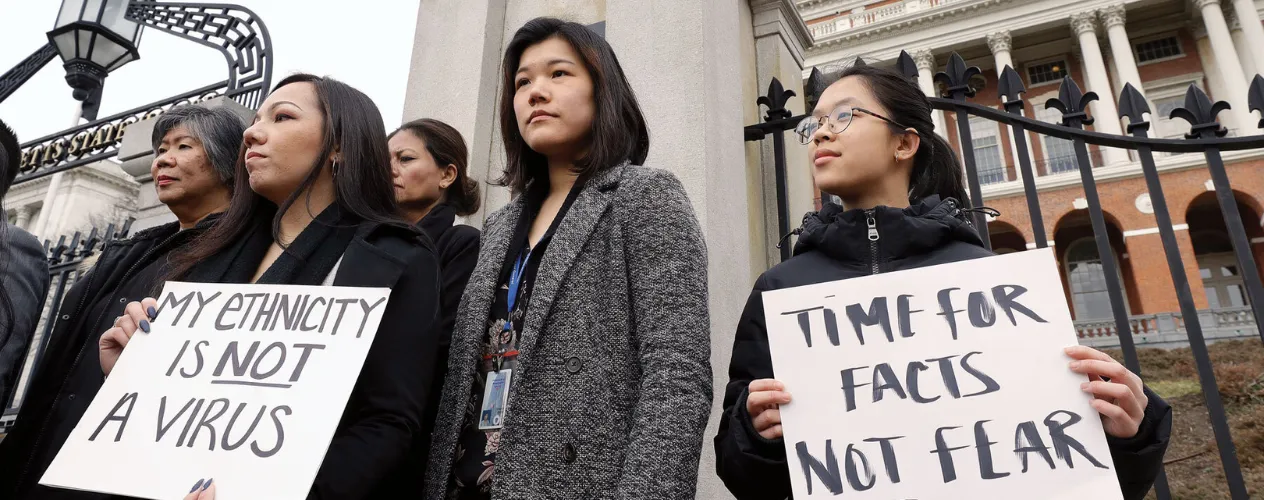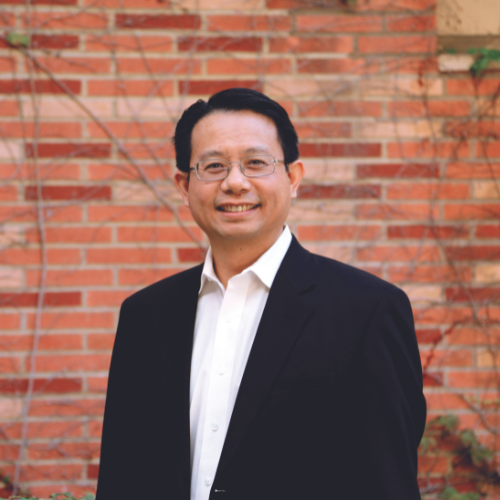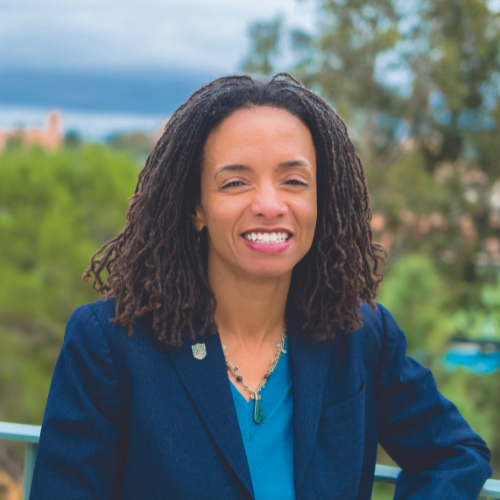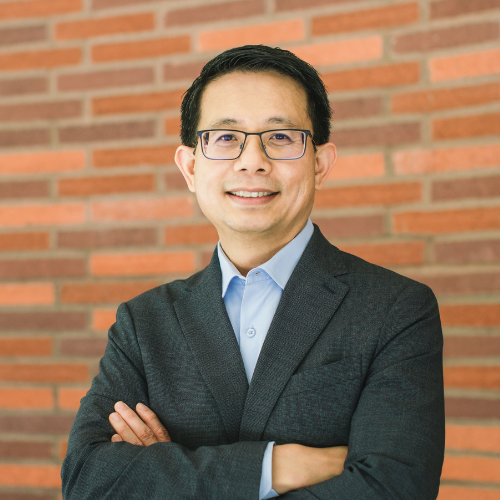In Pandemics, More Than Viruses Spread
Throughout history, racism and xenophobia have spiked during public health emergencies, underscoring the importance of proactive countermeasures.

AS THE NOVEL CORONAVIRUS pandemic took hold early this year, it sparked another type of contagion — one that, Fielding School experts note, is not at all novel in the context of public health emergencies.
In this case, because of COVID-19’s origins in Wuhan, China, Asian Americans were the targets of much of the misinformation, stigma, and vitriol in the United States. A 22-year-old Asian American student told the Los Angeles Times of the fearful looks directed her way whenever she coughed. Other news outlets reported on Asian American children experiencing harassment at school. Well before the stay-at-home orders, Chinatown stores and restaurants were said to be empty. AntiChinese memes and derogatory jokes circulated online. In late March, the FBI warned of a surge in hate crimes endangering Asian American communities. STOP AAPI Hate, the Los Angeles-based, community-led effort to track hate crimes that was established in March, received nearly 1,500 reports of COVID-19 related discrimination from Asian Americans across the country in its first month.
What we need to do is combat racism and xenophobia not just during public health emergencies, but all the time.

These and other incidents of racism and xenophobia — in some cases with malice, in others born out of fear and ignorance — underscore the importance of public health efforts to communicate effectively about what is and isn’t known about an emerging infectious disease, alongside proactive actions to fight misinformation and stigma targeting certain communities.
“The absence of information can lead to irrational fears and a tendency for some people to play into existing stereotypes,” says Gilbert Gee, FSPH professor of community health sciences, whose research has focused on conceptualizing and measuring racial discrimination, and in understanding how discrimination is connected to physical illness.
As the unfolding pandemic has demonstrated, the racism that pervades American society also drives how the pandemic affects Black, Indigenous, and other marginalized communities. These communities are among the hardest hit, in part because many hold jobs or live in circumstances that make physical distancing difficult or impossible, or due to, for example, historical and ongoing housing segregation — in the case of Native Americans, displacement to reservations — that helps explain why these communities experience disproportionate burdens of the underlying chronic conditions, such as asthma, known to increase risk of severe disease and death. “The problem is not simply that this virus exists; the problem is it is transmitted among people and along paths carved by the inequalities that already exist in our society,” said Chandra Ford, founding director of the Fielding School’s Center for the Study of Racism, Social Justice & Health and professor of community health sciences, in addressing the inaugural meeting of the new City of Los Angeles Civil and Human Rights Commission on the issue of structural racism and the COVID-19 pandemic in June.
COVID-19 has invoked stereotypes dating back more than a century, to the so-called yellow peril — the racist trope that people from East Asia were disease-ridden and a threat to Americans. And Gee points out that although much of the focus has been on Asian Americans, there are spillover effects to other racialized minority groups falsely characterized as spreading disease. “I’ve seen people say that this is the ‘Corona beer virus,’ and that it shows why we need to build a wall at the Mexican border,” Gee says. Racist and xenophobic memes and sentiments are amplified in an era in which social media has become so deeply embedded in the culture, he adds.
There is a long history of racism and xenophobia intensifying during emerging infectious disease outbreaks, Gee notes. In Europe, Jews were scapegoated during the bubonic plague of the 14th century. Irish immigrants were blamed for the typhoid outbreak in the U.S. and Canada in the mid-1800s. More recently, racist and xenophobic slurs and actions were directed toward Haitian Americans during the early years of the HIV epidemic in the 1980s, toward Chinese Americans in response to the 2003 SARS epidemic, toward Mexican Americans during the 2009 H1N1 pandemic, and toward West Africans during the Ebola outbreak that began in 2014.
Gee points out that science and medicine have been used to support bogus arguments that certain groups are inferior throughout American history, starting with efforts to justify slavery. “There was a twisted logic that people from Africa were biologically constituted to kill themselves off or were lazy, and that white slave owners were actually saving them by having them do manual labor,” Gee says. “That was part of the rationale in our more recent past for preventing interracial marriage and promoting eugenics policies — the idea that the white race would degenerate.”
Although these notions have been resoundingly rejected by modern medicine, Gee says, they have left an enduring legacy that racialized groups have fundamentally different biologies, which contributes to stigmatization and discrimination during public health crises.
“We can learn a great deal from what has happened in the past,” Ford says. “What we are seeing today is not unique to COVID-19, or to the experiences of people from Chinese ancestry.”

Ford notes that as a result of the stigmatization that occurred during the HIV epidemic, there continue to be high levels of mistrust among people in the very communities where improving access to services is critical. While science denialism such as the outright rejection of any scientific evidence regarding vaccines or climate change does exist, Ford has seen racism-related mistrust take the form of beliefs that the government was withholding an HIV cure. “These conspiracies come from very legitimate concerns, based on historical experiences,” Ford says. “But such beliefs can make it more difficult to achieve public health goals.”
As the pandemic expands ... we must move quickly to ensure the needs of the most vulnerable members of society are not overlooked.
Ford makes two other points. First, racial stereotyping by the public is only one of the ways racism operates in an epidemic. Racial thinking within the scientific community at a particular time reflects racist assumptions circulating in society during that period, she explains. Historically, the scientific community has contributed to those perceptions by, for instance, conducting research based on hypotheses in which racist assumptions are inadvertently embedded. Also, Ford says, stereotyping does not occur simply because a particular group has elevated rates of disease. “While this certainly exists, the stereotypes nearly always predate the conditions, and more often, a group is stereotyped if any evidence emerges that can be used to reinforce or extend existing bias, even if the evidence must be distorted to do so,” she says.
The novel nature of COVID-19 and other emerging infectious disease outbreaks provides especially fertile ground for racist and xenophobic actions and beliefs, Gee says. Particularly in the early stages, when so much is unknown, some people will look for a scapegoat. “There is a tendency to associate diseases with certain kinds of people, whether it’s the culture of the country from which the disease originated, or racialized and marginalized communities,” Gee explains.
“We don’t see the same sorts of reactions to chronic diseases that can’t be transmitted from one person to another,” says Nina Harawa an FSPH professor-in-residence of epidemiology whose work focuses on epidemiologic and behavioral interventions related to HIV prevention and treatment, predominantly in African American and incarcerated populations. “This fear surrounding an infectious disease, combined with ignorance, often leads to stigmatization.”
In the case of HIV, the early association with certain groups contributed to the problem, Harawa notes. The disease caused by the virus was initially referred to as gay-related immunodeficiency, or GRID, which exacerbated levels of discrimination and stigma for a population already experiencing homophobia.
The public health consequences when certain groups are stigmatized extend beyond the targeted populations. With HIV, Gee notes, the fear of stigma had the effect of discouraging at-risk individuals from getting tested or seeking treatment, likely contributing to greater transmission of the virus. Similarly, discrimination against a group of people in an emerging infectious disease outbreak such as COVID-19 can hinder public health efforts to conduct the testing and surveillance necessary to combat its spread. “If someone who is Chinese has a cough and worries that their doctor or people on the street are going to discriminate against them, they may hide,” Gee says.
For the targets of racism and xenophobia during a public health emergency, research has documented negative impacts on both mental and physical health. Gee notes that multiple studies have found that the chronic stress response when people experience discrimination can have physiological as well as psychological consequences. “This is something we should all be concerned about,” he stated in a March address to members of the Los Angeles City Health Commission, which advises and makes recommendations to the Los Angeles City Council. “All our efforts to combat discrimination and encourage people to be more empathetic and friendly to each other and avoid discrimination, and call that out, are important not only as a civil rights issue but as a public health issue as well.”
Gee, Ford, and Harawa laud the proactive messaging from public health and other leaders since the outset of COVID-19. “The anti-stigma messages were very much a part of early responses to the pandemic,” Harawa says. “You saw it on government websites and hear it from officials — they recognized the need to incorporate that into the response from the beginning.”

For better or worse, Harawa notes, the tone of the messages coming from the public health community can have a significant impact on the public response. “Part of the problem is that in the past, public health practitioners, along with others, have at times attributed these types of outbreaks to some sort of moral failing,” she says. “For example, immigrant communities have been blamed for living in unsanitary conditions, as opposed to focusing on the larger socioeconomic context of why that is.”
We don’t see the same sorts of [racist and xenophobic] reactions to chronic diseases that can’t be transmitted from one person to another.
Public health leaders can also send powerful messages through their words and actions. In February, before the widespread institution of physical distancing orders, New York City officials sought to counter unwarranted fears and stigma against Chinese Americans by getting photographed dining in Chinatown. More broadly, taking cues from the World Health Organization and U.S. Centers for Disease Control and Prevention, public health officials have encouraged the use of neutral terms to describe the current pandemic, such as COVID-19, as opposed to terminology with the potential to stigmatize, such as “the Chinese virus” or “the Wuhan virus,” which political leaders including President Trump have at times used. Harawa worries that such characterizations not only invite discrimination and stigmatization, but also could discourage countries from being open about potential emerging outbreaks in the future.
“Some people say it is simply being accurate to label a disease along with its origins — for example, people point to the ‘Spanish Flu’ and Middle East Respiratory Syndrome, or MERS,” Gee says. “But those diseases were named prior to 2015, when the World Health Organization issued a guidance document saying that going forward, we should use neutral nomenclature. Thus, using ‘Chinese virus’ because of similar terminology in the past is not justified.”
Under Ford’s leadership, the faculty, postdoctoral scholars, and students of FSPH’s Center for the Study of Racism, Social Justice & Health have begun developing a strategic plan. In early March, well before racial/ethnic disparities in COVID-19 were identified, they began sounding the alarm to policymakers that the pandemic was likely to impact Black, Indigenous, and other marginalized populations (such as incarcerated persons) disproportionately, though Ford notes there was little response at the time. The center established the COVID-19 Task Force on Racism & Equity on March 15, a collaborative endeavor co-chaired by Ford and Bita Amani of Charles R. Drew University, to ensure that efforts to contain the pandemic prioritize marginalized populations and issues of equity.
“As the pandemic expands, taking root in the U.S. and elsewhere, we must move quickly to ensure the needs of the most vulnerable members of society are not overlooked,” Ford says. As in all of its work, Ford notes, the center will follow three guiding principles, drawn from the scholarship on the impacts of racism on the nation’s health of Dr. Camara Phyllis Jones, a physician and epidemiologist at Morehouse School of Medicine who is past president of the American Public Health Association and a member of the center’s executive board: Value all individuals and populations equally; provide resources according to need; and recognize and rectify historical injustices.
“We want to promote the importance of allocating resources in a manner that isn’t just trying to lift all boats, but making sure that we reach people who are either in boats that have holes in them, or don’t even have a boat,” Ford explains. “And we need to recognize and address the suspicions and mistrust based on past experiences. For those of us in public health, modeling equity in our work will be critical to making sure that we’re able to reach those who are most vulnerable — both in terms of addressing their needs, and in making it possible for them to trust and be collaborators in the process.”
Gee agrees that public health leadership in fighting against the racism and xenophobia that tend to spike during emerging infectious disease outbreaks is critical, and can make a difference. He encourages everyone not to remain silent when they witness someone making a racist comment. “Remind them that we are up against a germ, not other people,” Gee says, adding that individuals who experience discrimination should be urged to report it, in order to raise awareness of the problem and ensure that it gets the attention it warrants. It is not simply about changing people, he notes, but also institutions and policies.
“Unfortunately, I would predict that when COVID-19 is behind us and the next disease emerges however many years from now, we will see the same thing,” Gee says. “What we need to do is combat racism and xenophobia not just during public health emergencies, but all the time.”


